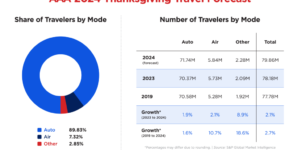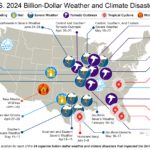According to Bennett “BC” Verniero, senior vice president of Business Solution Architecture at Chubb, there are four major principles that have guided the development and evolution of the company’s digital small business platform, Chubb Marketplace.
Principle #1: Agent Influence. “First and foremost is that the entire system—the way it looks, the way it feels to an agent, the way they engage with it—was really designed by them and for them…When we are thinking about enhancements or features, we always engage the agents and get their feedback and whether it’s going to work for them. They give us a lot of feedback in a couple of different ways. And we’re really always open to that. And so that initial principle of by and for our independent agents, it’s something that we truly believe in. We’ve done it from the beginning, and we continue to do.”
Principle #2: Consumer Site Influence. “We try to build [into] it…what a consumer would ask for.” The idea is to give agents an experience and features similar to what they might have in their non-business life. It is important that the system becomes familiar to them. “It has a lot of tricks and techniques that consumer sites like, things that make it easy for you to get back to where you were, help you along the way and are much more intuitive than sort of a flat business process orientation.”
Principle #3: Omnichannel Experience. “The third design principle was [that] we really sought to leverage a lot of corporate assets and bring that feature and functionality up through and onto the Marketplace…So, if I call into a call center and I have an interaction with an agent, and then I come on to Marketplace, that experience and that information is immediately accessible.” This is important not only for reusability but also because it enables omnichannel, integrating data across devices and platforms.
Principle #4: Service-Oriented. “The last one to make that all work is really a service-oriented architecture that allows for the front end to be very, very quick and nimble and for us to change things as need be.”
Verniero also described some features of Marketplace:
Dashboard and Profile. Every user/agent has a personal profile in the system, including a nickname and their birthday if they want. It includes their Chubb agency numbers for quoting business, how they prefer to receive notifications and alerts (email or text). Alerts can be about the account or a specific policy, whether a requested change has been made, the payment status, or if a cancellation is pending. Claims information will be added in 2019. The opening screen also shows yearly activity by the agent, including numbers of quotes by policy type and various charts.

Badges and Rewards. A gamification feature allows agents to earn badges if they do so many quotes for a certain type of business or for the number of policies they’ve sold overall, as well as other activities such as if they access educational materials. The rewards feature allows agents to earn points for their quote activity on the site, although not sales. They can trade in those points for an Amazon gift card, Starbucks card or Apple iTunes card.

Knowledge and Support. Education and training is available featuring a Frequently Asked Questions (FAQ) section; information on policy forms that outlines exactly what Chubb’s coverages are; online training and reference material; and a fully searchable library of in-depth information on particular topics organized by product or servicing. The FAQs and top training shown first on the screen are based on the top things that agents around the country are looking at and change every day based on what the agents are viewing.
Technical Support. It’s not just for technology help. Every Chubb agent is assigned a team of underwriters as well as a dedicated sales rep. Agents can reach the people responsible for their accounts.
Start and Restart. Agents can start a quote, save what they have done, go do something else and return to pick up where they left off.
Two Questions. Agents simply type in natural language (florist or restaurant, for example) to start a quote. No numbers or codes. They then indicate annual revenues and the state. That’s it.
Appetite Check. After answering the two questions, the agent gets a list of all the Chubb products available for this particular risk. Agents learn right away whether or not this is a market Chubb is willing to entertain.

Shopping Cart. Once they’ve checked all their coverages, agents get a quote summary showing each coverage and the premium. Agents can then select each coverage they want, review and change them if needed, and place each in the shopping cart where they become part of the final quote summary.
Quote Proposal. After the agent has decided which coverages to include, the system provides a single quote summary for the customer that shows all the coverages and premium in one proposal.
Account Activity. Shows everything that has occurred related to an account and the status of any events. This includes an indication of whether it is new business, billing information and payments, endorsements, renewals, and the status of what’s going on. Everything is on an account bill basis, so if the client has five policies, the client gets one single bill with all of them on it.
Policy Issuance. Within minutes of completing a quote, agents are sent copies of the policies.
Client Center. Clients have access to a place in the Marketplace where they can view their policies, submit claims and pay their bills online.
Feedback. The site offers agents easy ways to comment on anything they have done or any of the features or information.




















 Florida Home Sales Decline Amid Hurricane Recovery, Surging HOA and Insurance Costs
Florida Home Sales Decline Amid Hurricane Recovery, Surging HOA and Insurance Costs  The U.S. Has Sustained 24 Billion-Dollar Disasters in 2024
The U.S. Has Sustained 24 Billion-Dollar Disasters in 2024  U.S. Inflation Rose Slightly in October
U.S. Inflation Rose Slightly in October  The Evolving GenAI Journey: Three Ways the Technology Is Impacting P/C Insurance
The Evolving GenAI Journey: Three Ways the Technology Is Impacting P/C Insurance 








